I am not much of a boat anchor guy but I really like the pre-jetsons space agey look of some of the broadcast and communications receivers from the mid-fifties. Combine that with too much free time for looking at ebay and this happens:
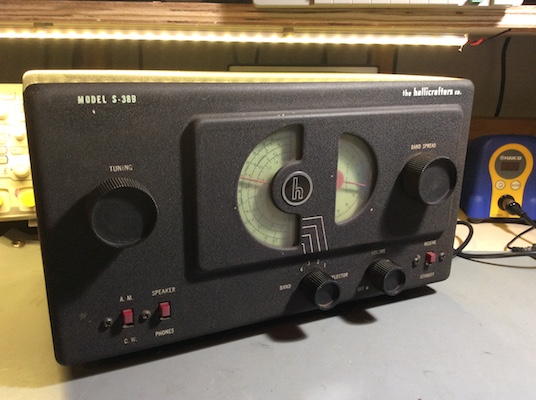
This is Hallicrafter's take on the All American Five, a four band AM/CW receiver with a band spread control and requiring an external antenna called the S38B (I think there were five versions of this radio, all based on the same design). It was manufactured between 1947 and 1953. I am going to learn how to restore old radios by restoring an old radio, I guess.
Here's what it looks like inside:
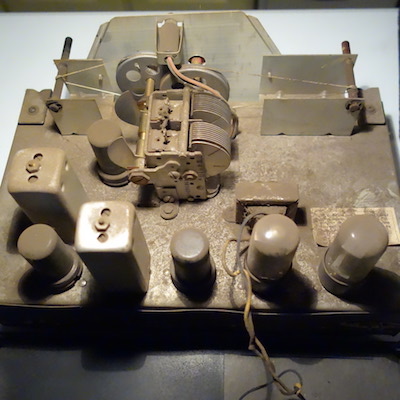
A lot of dirt and grease up top. A little less underneath. I did a brief power up test and, of course, it didn't work. Probably one or more bad tubes, the filaments of which are wired in series. After doing a little research, here are the first things I am going to do:
Inspect for damage and mods made by previous owners,
Replace the existing wax paper and electrolytic caps,
Clean the chassis, top and bottom,
Install an isolation transformer and fuse (more on this later).
After doing the inspection, I found minor damage to the speaker cone (which I can repair) and no obvious mods or rework other than the lamp wiring replacement, so I set about cleaning the chassis. Here's what it looks like after four or five hours of degreasing and removing corrosion, etc. The tools of choice: simple green, a mild degreasing solvent, brass-x, toothbrushes and a pile of cloth rags.
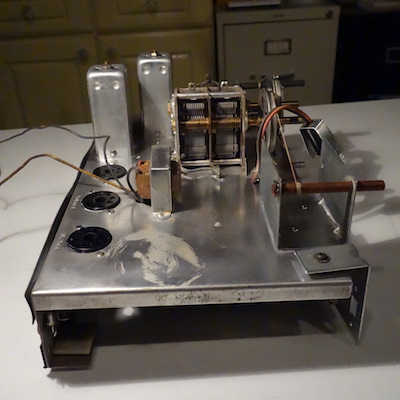
The smear on the chassis is from varnish left behind when someone scraped a label off the chassis. It was removed after this photo. Next up, recapping...
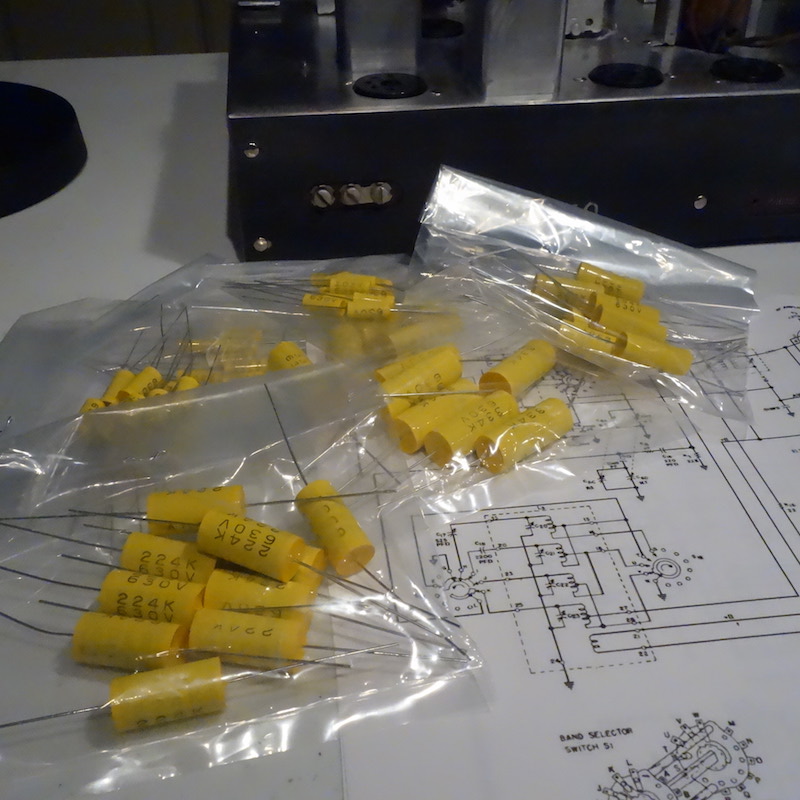
The bottom after the recapping:
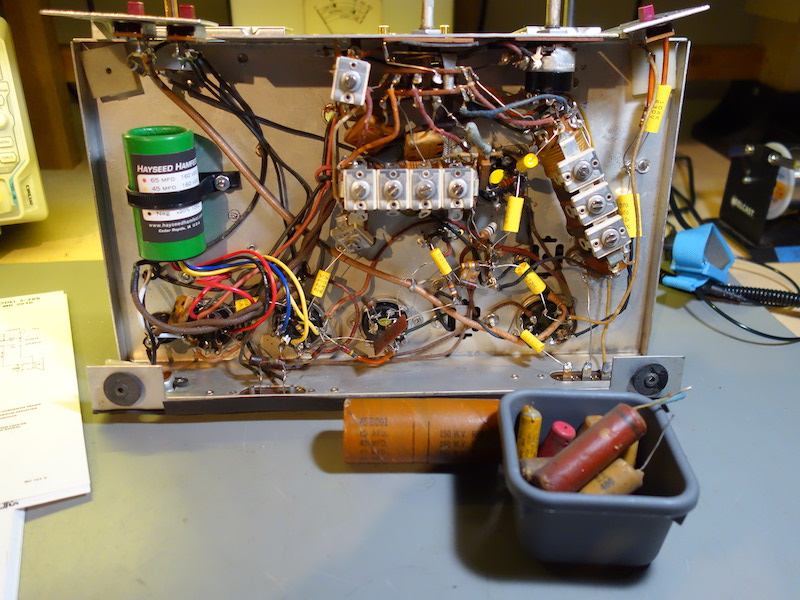
The S38B, like all the AA5 radios, was heavily cost-engineered to the point of being dangerous (hence the isolation transformer...) with the result that the physical placement of components and wiring markedly effects the radio's performance.
When replacing components ignore matching lead length and component placement at your peril. I did not.
While I wait for replacement vacuum tubes to arrive, I am going to install the isolation transformer and see if figure out how the circuit actually works. I haven't tried to decipher a tube-based circuit in, I dunno, forty years?